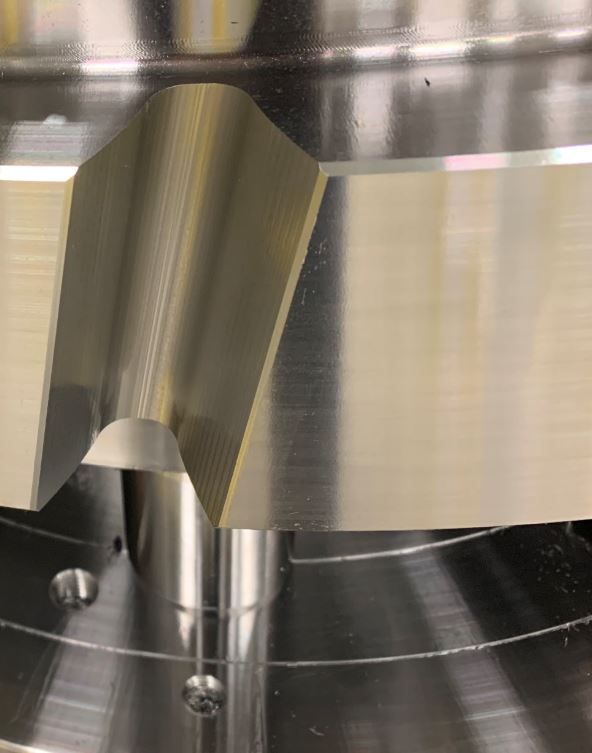Maintaining Synchronization
Mazak Multi-Tasking Machines Synch Up for Gear Cutting
Basic gear tooth milling is possible on any standard full simultaneous 5-axis multi-tasking machine. However, gear power skiving and hobbing on those machines requires two additional key elements – spindle speed synchronization and advanced software specifically for programming those particular gear machining operations.
For both power skiving and hobbing, a multi-tasking machine must precisely maintain synchronization between the rpm of its B-axis milling spindle and that of the workholding C-axis turning spindle throughout the cutting process. This is critical because of the minute amount of allowable margin for error with this rotational synchronization during these gear cutting operations.
It should also be noted that power skiving, as compared to gear hobbing, requires an even higher level of synchronization precision because spindle speeds for that operation are much greater than those used in hobbing. For example, hobbing a 20DP 60 tooth spur gear with a single start 2.0” diameter hob at 328 sfm will require the tool to rotate 627 rpm and the part to rotate at 10.45 rpm; whereas, power skiving the same gear with a 1.45” diameter, 29 tooth cutter tilted at 20 degrees cross angle will require the tool to rotate 2,526 rpm and the part to rotate at 1,220.9 rpm to produce the same cutting velocity of 328 sfm.
This is why multi-tasking machines for power skiving must also have rotary scale feedback capabilities for those spindles to ensure such synchronization. Scale feedback allows the machine to keep track not only of the rotational velocity of the spindles, but also their locations respective to one another
To illustrate, consider the simple operation of drilling a hole. If the spindle’s/drill’s speed varied by 5% during actual drilling, it would not affect the outcome of the process or the quality of the hole and would not damage the drill. In power skiving, such a fluctuation in rotational speed would generate vibration that – once started – is difficult to eliminate and would inhibit gear tooth surface quality.
Although gear cutting on a multi-tasking machine can require high spindle speeds (regarding milling processes), it does not necessarily involve excessive amounts of machine power/torque. Depths of cut are light to medium, much like those of a conventional end milling operation on a die or mold surface.





